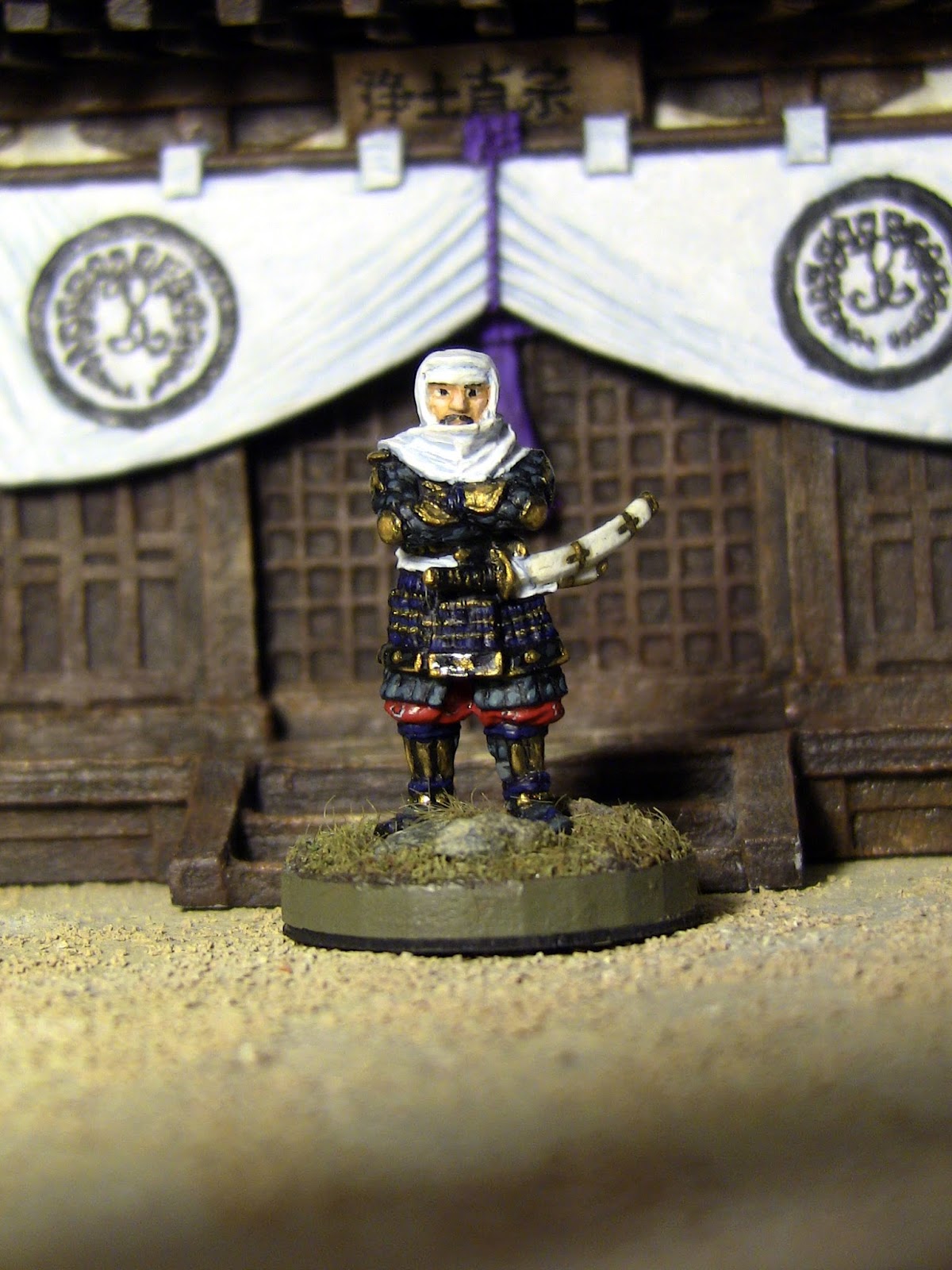Time to revisit another old project. I was a pretty avid Warhammer Ancient Battles player and started collected samurai figures (I've got about 300 mostly unpainted figures stashed in the closet) for their Divine Wind supplement. Sadly WAB was shut down before they every released the supplement, so this project has been gathering dust for years. Now that Osprey is releasing their Ronin rules, I thought it might be a good idea to revisit what I had in my collection.
First up is a Buddhist temple complex I bought from John Jenkins Designs. I bought mine unpainted and I remember it being quite a bit of work to get the resin in a state where primer and paint would stick. However, the level of detail is fantastic and there were hardly any bubbles. My only complaint was that the wall corners were not square and there was some warping on the front gate, making it difficult to get them to fit tightly. I used plastic card under some of the wall sections to try and help, but as you can see below, it still isn't perfect.
I planned to have my battles between the forces of Oda Nobunaga and the Ikkō-ikki, so I have styled my temples as belonging to Jōdo Shinshū Buddhists. The mon and purple trim were taken from the American website of Jōdo Shinshū.
 |
| Jōdo Shinshū Buddhist temple |
 |
| Main temple gate |
 |
| Main temple building with the Jōdo Shinshū Mon. The writing on the placards comes from various prayers. |
 |
| Rear of the temple |
 |
| Hongan-ji Kennyo 本願寺 顕如 |
 |
| Hongan-ji Kennyo 本願寺 顕如 |
For his Jōdo Shinshū Sōhei supporters, my figures are mostly a mix of Old Glory, TAG, and a single Perry figure. During my travels in Japan looking for info on the Ikkō-Ikki (luckily I have a Japanese wife who is willing to humor me and provide translating support), images of Jōdo Shinshū monks generally showed them in darker colored robes rather than the oranges and yellows commonly seen on miniatures, so I have painted them accordingly. However, I did take some liberty with the sashes to give them a bit more pop. The figure with the banner is a poorly converted (I'm not that great with green stuff) Old Glory samurai, with the Buddhist prayer seen on the cover of Carol Richmond Tsang's, "War and Faith: Ikkō-Ikki in Late Muromachi Japan" written in by my wife. This translates as, "Advance and be reborn in paradise; retreat and fall immediately into hell."
 |
| Jōdo Shinshū Sōhei |
 |
| Ikkō-Ikki |
 |
| Ikkō-Ikki |
For painting guides, I used the Osaka Castle Museum's weapons and armor catalog, and the website of the Costume Museum in Kyoto.





















